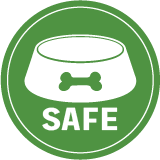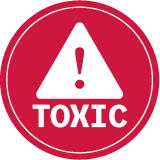How to Calm Even the Most Hyperactive Pet
Whether you have a dog or cat, if their crazy-high energy level is driving you up a tree and making you wonder if your house and furnishings will survive, here's great news about how to get them to calm down and limit their rowdiness to specific play times and places.

STORY AT-A-GLANCE
- Most dogs labeled hyperactive by their owners are better described as hyperkinetic. They are over-reactive to normal stimuli and seem unable to rest
- There are many factors that influence a dog’s behavior. Often, dogs display normal but undesirable behavior and are labeled hyperactive
- There are many things owners of very active dogs can do to redirect their pet’s energy. One of the most important is to insure their dog is receiving adequate exercise
- Kittens with loads of crazy energy and cats with a condition called feline hyperesthesia are sometimes labeled hyperactive
- Make an appointment with your holistic vet if symptoms continue, as they have a whole host of other treatment options that could help
Editor's Note: This article is a reprint. It was originally published January 24, 2016.
The term "hyperactive" or "ADHD" is used all the time these days, and many pet owners use one or both to describe a very active pet, which is typically a dog, though some people believe their cats are hyper as well.
But despite the popularity of the term, the clinical syndrome of hyperactivity is actually quite rare in pets.
True hyperactivity involves over-activity, attention deficits, impulsivity, and high testing physiologic parameters, all of which are conventionally calmed by — of all things — stimulant drugs.
Most dogs who appear hyperactive are probably better described as hyperkinetic. They react to normal everyday sights, sounds, and smells as if they're experiencing them for the first time. They often seem unable to rest even in a completely comfortable, quiet environment.
Hyperkinesis Symptoms and Diagnosis
Hyperkinetic dogs are usually 3 years or older and typically have increased heart and respiratory rates, poor body condition scores, reactivity, and agitation. They are emotionally aroused by routine stimuli and often stay in a state of arousal long after the stimuli is removed.
In order to diagnose true clinical hyperkinesis in a dog, certain things must be ruled out first, including:
- Conditioning (meaning the dog has been rewarded for undesirable behavior)
- Lack of appropriate exercise and environmental stimuli
- Phobias and anxiety disorders
- Territorialism
- Hyperthyroidism
- Allergies or another medical condition
- Cognitive decline (in older dogs)
After all root causes for hyperactive behavior are ruled out, the traditional method for diagnosing hyperkinesis is to observe the dog in a hospital setting, where she is put in a quiet location and her physical activity is recorded for an hour. Her heart and respiration rate are measured every 15 to 30 minutes.
If both her activity level and physiologic measures remain elevated, she moves onto the next test in which she's given a stimulant and put in an alternate quiet area.
A minimum of one hour later, she's returned to the testing area, and if she behaves in a calm manner, with reduced heart and respiration rates, she is diagnosed with hyperkinesis.
This test can also be conducted at home over several days under the guidance of a veterinarian, but often the results are less conclusive and unreliable.
Is Your Dog's 'Hyperactivity' Actually Normal Behavior?
Veterinarians and animal behaviorists agree most symptoms of hyperactivity that dog owners complain about are actually either breed-specific behaviors, conditioned behaviors, behaviors resulting from a lack of appropriate physical or mental stimulation, or a combination of these things.
It's important to recognize the difference between canine behavior that is abnormal, and behavior that is actually normal given the dog's circumstances, but undesirable.
In order to sort it out, your veterinarian or an animal behavior specialist will need a detailed description of the unwanted behaviors, including:
- How often your dog performs them and to what degree
- How much exercise, social interaction, playtime and exploration your pet gets daily
- How you and other family members respond to your dog's undesirable behaviors
Factors That Can Influence a Dog's Behavior
There are many things that can affect your pet's behavior, including whether she's alone or ignored much of the time, isn't getting enough exercise, or hasn't received obedience training. It's also possible she's been conditioned through your response to use physical activity to get attention, or is punished for unwanted behavior instead of rewarded for desired behavior.
If you notice your dog is much easier on your nerves after he's been to the dog park or has run around the backyard with your kids for an hour, you can draw the logical conclusion that burning off physical and mental energy has a positive effect on his behavior.
Dogs that don't get their daily needs met for activity, social interaction, mental stimulation and environmental enrichment may appear to be hyperactive as they attempt to fulfill those needs within the confines of their environment.
How to Help a 'Hyperactive' Dog
Since very few pets are clinically hyperactive or hyperkinetic, you should evaluate your dog's lifestyle from every angle as a first step.
- Make sure your dog is getting plenty of exercise — rigorous exercise — until SHE tells you she's tired.
- Provide mental stimulation with puzzles, treat-release toys, hikes, swims and other outdoor activities that appeal to your dog's natural instincts.
- Focus on desired behaviors your dog performs rather than on what you don't want him to do. Dogs respond to positive reinforcement behavior modification, which does not include punishment.
- Enroll your dog in an obedience class or an activity that helps him focus, such as nose work.
- Feed your dog a balanced, species-appropriate diet to avoid food intolerances, amino acid deficiencies and allergies common in dogs fed low-quality commercial pet food. Vets underestimate how much food sensitivity can contribute to restless, hyperkinetic behavior.
- And last but not least, discuss supplements such as L-theanine, ashwagandha, GABA, melatonin, hops, chamomile, valerian root, flower essences and CBD oil with your integrative vet.
Why Exercise Is So Important, Especially for High Energy Dogs
Every dog needs regular physical activity to be healthy, and this is especially true if your dog is a high-energy breed. Lack of sufficient exercise and playtime is the biggest cause for restless behavior, erroneously categorized as hyperactivity or obsessive-compulsive disorder (OCD).
Dogs are workers by nature. Canines in the wild have very busy lives tending to the business of survival, raising their young and socializing with other members of the pack. Unfortunately, many companion dogs today have sedentary lives. They don't get enough physical or mental stimulation, and they often spend many hours alone at home every day, or watching their owners watch TV, work on the computer, or text.
Dogs with very active temperaments can develop behavior problems if they aren't provided opportunities to work off all that energy. If your dog is under exercised or bored, he may show one or multiple behaviors that may appear as though he has a clinical case of hyperactivity:
- Barking or whining for attention
- Excessive mouthing and play biting
- Predatory and rough play
- Destructive chewing, digging or scratching
- Counter surfing, garbage raiding and other sneaky type behaviors
- Rowdiness, crashing into furniture, and jumping up on people
If you feel sure the lifestyle you're providing your pet gives him plenty of outlets for physical activity and mental stimulation, but your furry buddy is still hyperactive more often than not, make an appointment with your veterinarian.
Hyperactivity in Cats
Most healthy kittens can seem hyperactive as they zoom around the house, chasing something or nothing at all. They tend to climb drapes, stalk "prey" by hiding under furniture, spit and hiss and strike out with their claws, and perform countless other slightly weird but adorable behaviors.
Patience is required, as the kitten stage doesn't last forever. Soon enough, your feline family member will mature into a much slower moving, often-napping adult cat. It's important to know that a suddenly over-active older cat is cause for concern. There are a number of serious medical conditions that can bring on hyperactive-like behavior in an adult cat, including:
- Feline AIDS, feline infectious peritonitis, and brain disorders
- Severe itching from allergies or an infection
- Hyperthyroidism
Another condition that can cause your cat to seem hyper is a weird disorder called feline hyperesthesia, which is a medical term for what is more commonly referred to as rippling skin syndrome, rolling skin syndrome, or twitchy cat syndrome. Other technical names include neuritis and atypical neurodermatitis.
Feline Hyperesthesia
Hyperesthesia is a condition in which the skin on a cat's back ripples from the shoulders all the way to the tail. The rippling is visible in some cats, but more difficult to see with others. What many cat guardians notice first is the kitty turning toward her tail suddenly as though something back there is bothering her.
She may try to lick or bite at the area. And most cats with the condition will take off running out of the blue as though something scared them or is chasing them.
Cats with hyperesthesia also have muscle spasms and twitches, and twitching of the tail. If your cat has the syndrome, he may show sensitivity when any point along his spine or back is touched. He may chase his tail, bite at himself, turn toward his tail and hiss, vocalize, run, and jump. He may also seem to be hallucinating — following the movement of things that are not there — and he may have dilated pupils during these episodes.
Treatment Options for Hyperesthesia
The treatment for feline hyperesthesia syndrome involves reducing stress on your cat. However, look at what you're feeding her first.
She should be eating a balanced, species-appropriate diet that contains no carbs, moderate amounts of animal fat, and high levels of animal protein. This will help eliminate any food allergies she may be dealing with, and will improve the condition of her skin and coat. You can also consider supplementing with a rich source of omega-3 fatty acids like krill oil.
Managing Stress in a 'Twitchy' Cat
To address stress-related triggers in a kitty with hyperesthesia, you'll need to take steps to make your cat as comfortable as possible with his living arrangements. This means building a great deal of consistency in his daily routine, and also enriching key areas of his environment, including:
- Safe and secure food, water and litter box locations
- His own places to climb, scratch, rest and hide
- Consistency in all your interactions with him
- Appropriate sensory stimulation, and the company of another or other non-adversarial cats
Also set aside time each day to play with your cat. Use interactive toys like a feather wand or a toy at the end of a string. Many cats also love chasing laser toys, ping-pong balls and rolled up bits of paper. Above all, make an appointment with your holistic vet if symptoms continue, as they have a whole host of other treatment options that could help.











